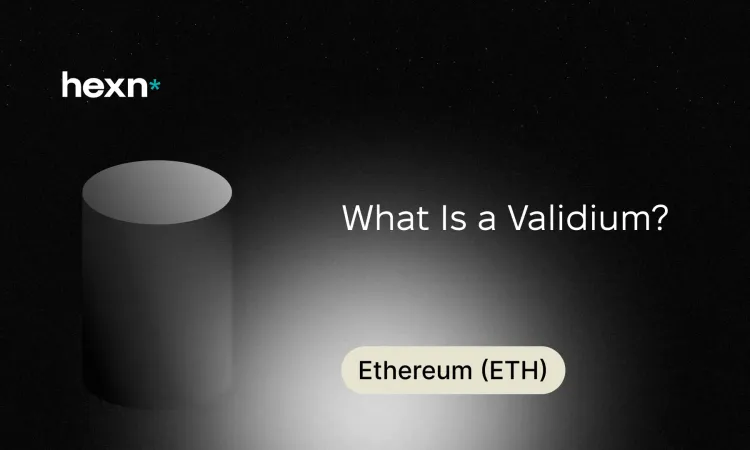What Is a Validium?
Validiums are a type of Ethereum scaling solution that run transaction processing off the main chain while using zero-knowledge proofs to vouch for correctness. They matter because they offer a way to greatly increase transaction throughput and lower costs, but they also change the balance between trust, privacy, and data availability.
Key Points to Remember
- Off-chain execution with ZK proofs means transactions are processed outside Ethereum while a succinct proof is submitted on-chain to confirm results.
- Batching and operators let validiums group many transactions together, cutting on-chain storage and gas fees.
- Trade-offs exist — validiums can improve speed and privacy but introduce risks around data availability and potential centralization.
How Validiums Scale Ethereum
Validiums speed up the network by shifting the heavy lifting off Ethereum. Rather than posting all transaction data on-chain, an operator or set of operators executes activity off-chain, then produces a cryptographic proof that the off-chain work was correct. The chain accepts the new state only after verifying that proof.
Transactions and Operators
When users submit transactions to a validium, those transactions go to an operator node or a group of operators. These entities collect transactions into batches, process them off-chain, and run a proving system that outputs a zero-knowledge proof attesting to the batch's correctness.
State Commitments and On-Chain Anchors
The off-chain state is summarized by a compact commitment, often derived from a Merkle-style structure. This state root is posted on Ethereum along with the validity proof. If the proof checks out, the mainnet accepts the new commitment, keeping the on-chain record concise while anchoring off-chain activity.
Deposits and Withdrawals Between Layers
Users move assets into a validium by sending funds to a special contract on Ethereum that mints or credits balances off-chain. To exit, users request withdrawals which operators include in a batch. Once that batch's proof is validated on-chain, the contract releases funds back to users.
EVM Compatibility, Common Use Cases, and Technical Limits
Where Validiums Work Best
Validiums are well suited to high-volume, straightforward operations like token transfers, payments, and simple swaps. Because they avoid publishing all data on the mainnet, they can process many more transactions at much lower cost.
Why Complex Smart Contracts Are Harder
Proving complex smart contract logic inside zero-knowledge frameworks requires more computation and more sophisticated proving circuits. That raises the cost and complexity of creating proofs, making it more challenging for validiums to support full-featured decentralized applications that rely on rich on-chain logic.
Developer Approaches to Bridge the Gap
Projects experimenting in this space are building zk-friendly toolchains, specialized languages, or adapted compilers designed to reduce proving overhead. These workarounds can expand compatibility but often require trade-offs in features or developer ergonomics.
Main Advantages of Validiums
- High throughput: Off-chain batching enables far more transactions per second than the mainnet alone.
- Lower transaction costs: With less on-chain data to store, gas fees can fall significantly.
- Improved privacy: Keeping transaction details off-chain can reduce public exposure of user activity.
Principal Risks and Trade-Offs to Consider
- Data availability risk: Because transaction data is not fully posted on-chain, users depend on operators or data managers to publish data when needed. If data is withheld, withdrawals or state reconstruction can become difficult.
- Centralization pressure: Producing validity proofs can require specialized hardware and expertise. If only a few parties can perform this role, the network may become centralized.
Is a Validium the Right Choice?
Validiums are a strong option when you need very high throughput and low fees for relatively simple transaction patterns and you can accept some reliance on off-chain data providers. If your application depends on complex on-chain contract behavior or requires maximum decentralization and on-chain data availability, alternative layer 2 approaches may be a better fit.
Final Takeaway
Validiums offer a compelling path to scale Ethereum by combining off-chain execution with cryptographic proofs. They deliver major gains in speed and cost but change the trust model by introducing data availability and operator-related risks. Choosing a validium means weighing those efficiency gains against the added responsibilities around data publication and governance.
